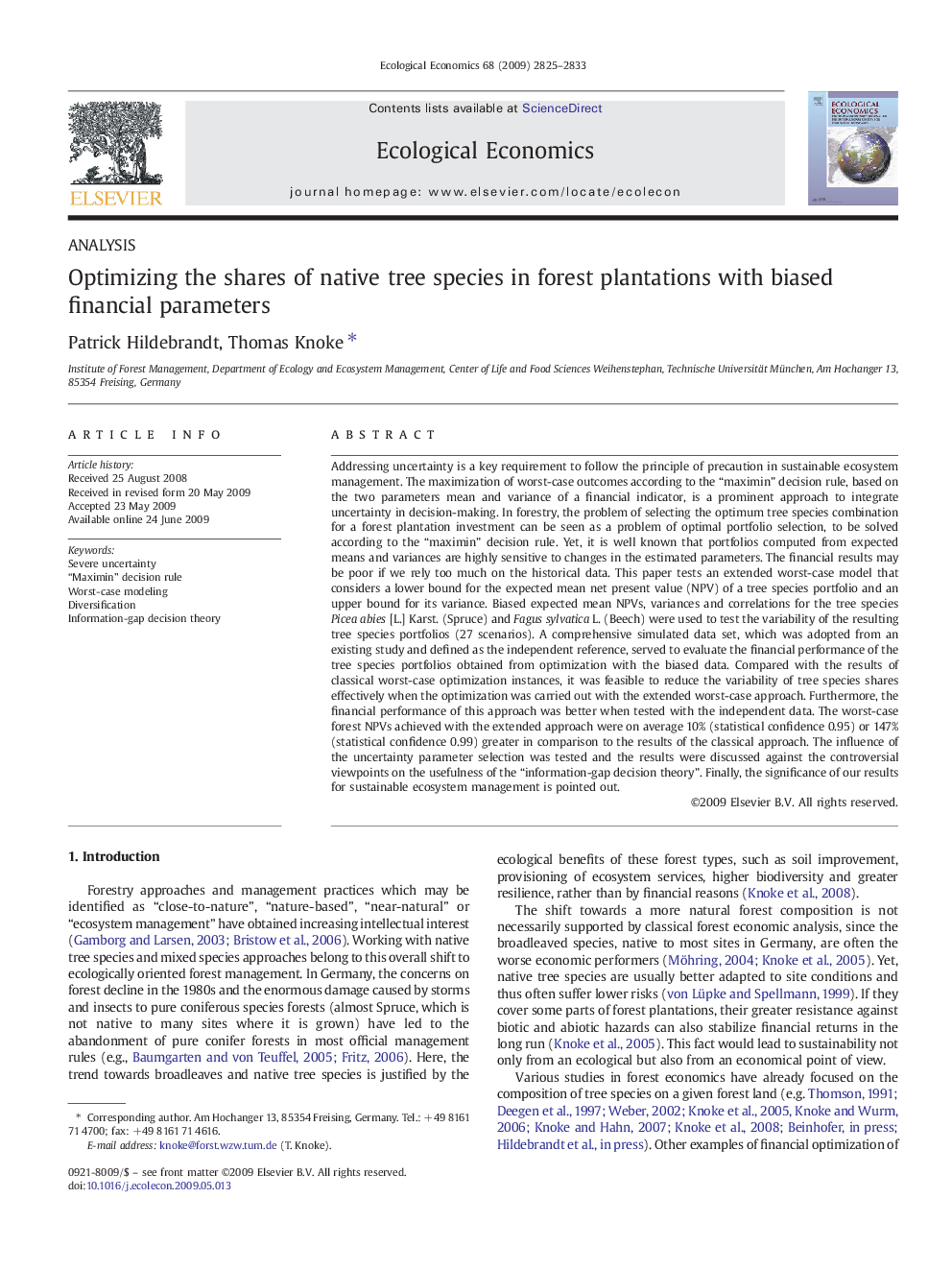| کد مقاله | کد نشریه | سال انتشار | مقاله انگلیسی | نسخه تمام متن |
|---|---|---|---|---|
| 5051428 | 1371124 | 2009 | 9 صفحه PDF | دانلود رایگان |

Addressing uncertainty is a key requirement to follow the principle of precaution in sustainable ecosystem management. The maximization of worst-case outcomes according to the “maximin” decision rule, based on the two parameters mean and variance of a financial indicator, is a prominent approach to integrate uncertainty in decision-making. In forestry, the problem of selecting the optimum tree species combination for a forest plantation investment can be seen as a problem of optimal portfolio selection, to be solved according to the “maximin” decision rule. Yet, it is well known that portfolios computed from expected means and variances are highly sensitive to changes in the estimated parameters. The financial results may be poor if we rely too much on the historical data. This paper tests an extended worst-case model that considers a lower bound for the expected mean net present value (NPV) of a tree species portfolio and an upper bound for its variance. Biased expected mean NPVs, variances and correlations for the tree species Picea abies [L.] Karst. (Spruce) and Fagus sylvatica L. (Beech) were used to test the variability of the resulting tree species portfolios (27 scenarios). A comprehensive simulated data set, which was adopted from an existing study and defined as the independent reference, served to evaluate the financial performance of the tree species portfolios obtained from optimization with the biased data. Compared with the results of classical worst-case optimization instances, it was feasible to reduce the variability of tree species shares effectively when the optimization was carried out with the extended worst-case approach. Furthermore, the financial performance of this approach was better when tested with the independent data. The worst-case forest NPVs achieved with the extended approach were on average 10% (statistical confidence 0.95) or 147% (statistical confidence 0.99) greater in comparison to the results of the classical approach. The influence of the uncertainty parameter selection was tested and the results were discussed against the controversial viewpoints on the usefulness of the “information-gap decision theory”. Finally, the significance of our results for sustainable ecosystem management is pointed out.
Journal: Ecological Economics - Volume 68, Issue 11, 15 September 2009, Pages 2825-2833